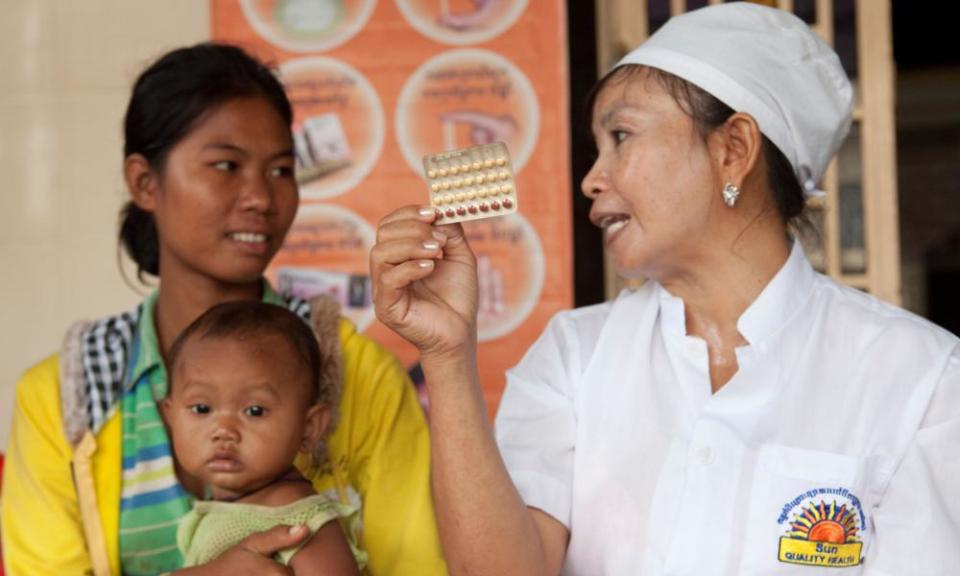Access to contraception falling far short of global targets – report

More women and girls in low income countries are using family planning than ever before, but global efforts to widen access to contraception are still falling well behind targets, according to a report.
One year away from a global deadline to widen access to modern forms of family planning, such services are accessible to less than half of the women that policy makers hoped to reach.
The report by the Family Planning partnership was released ahead of a summit in Nairobi this week, where governments are expected to make further pledges on family planning, and other reproductive health spending.
Around 314 million women and girls are now using modern contraception, according to the study, which is focused on 69 low-income countries and uses statistics from national surveys, health services and UN population data.
Related: 2017: the year we lost control of world population surge?
The report found that 53 million women have begun using contraceptives since 2012 – far fewer than the 120 million women experts had hoped to reach by 2020.
Jason Bremner, director of data and performance management for Family Planning 2020, said that whether or not such global targets are met is determined by the progress made in a handful of countries with high populations.
“There are around 900 million women of reproductive age across the 69 countries, but those 900 million women are not evenly distributed across the 69 countries,” he said. He pointed to countries with large populations such as India, where there are around 300 million women of reproductive age, and which struggled to meet – and subsequently scaled down – ambitious targets set in 2012.
India is now within reach of achieving its revised targets, added Bremner, but needs to improve the range of family planning methods available to women.
Around four in 10 women of reproductive age in India are accessing family planning. Among these women, three quarters have been sterilised, according to the report. Recent research suggests that fewer young women are opting for sterilisation, said Bremner, but the figure remains high compared with other methods listed in annual data because the procedure is permanent.
As countries attempt to widen access to family planning, many have also seen an increase in the number of women of reproductive age, said Bremner. “Even if we were to keep the prevalence [of women accessing services] the same from year to year, to do that we would have to serve more women,” he said. “In Uganda, the number of users almost doubled [from 1.6 million in 2012 to 3.1 million in 2019]. That’s a great accomplishment,” he added.
Related: Trump’s anti-abortion global gag rule threatening women's lives, report says
Among the 69 countries included in the report, only nine countries are on track to surpass targets set for 2020. These countries are Mozambique, Chad, Cameroon, Kyrgyz Republic, Zimbabwe, Kenya, Ghana, Burkina Faso and Sri Lanka.
The biggest improvement in access to modern contraception was across eastern and southern Africa, where the proportion of women accessing services has grown by seven percentage points since 2012.
Despite an increase in women accessing reproductive health services globally, there are concerns that such progress has been put at risk by the Mexico City policy, also known as the “global gag rule”, signed in 2017 by Trump. The policy blocked US funds to any organisations involved in abortion advice and care overseas.
The US remains one of the seven biggest donors in 2018 – along with Canada, Denmark, Germany, the Netherlands, Norway and the UK – though this is partly due to delays in distributing funding from previous years.

 Yahoo News
Yahoo News 